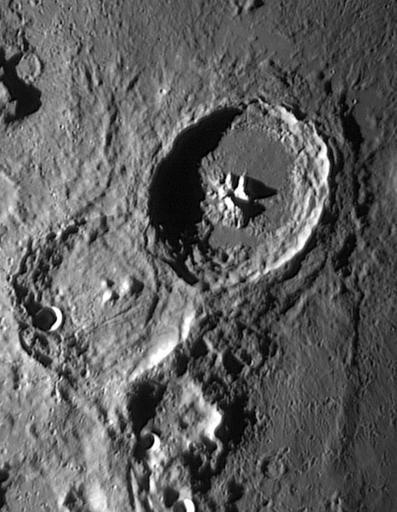MAKE A MEME
View Large Image

| View Original: | Theophilus_130924_01.jpg (605x780) | |||
| Download: | Original | Medium | Small | Thumb |
| Courtesy of: | commons.wikimedia.org | More Like This | ||
| Keywords: Theophilus 130924 01.jpg en Lunar craters Theophilus Cyrillus Imaged 2013 SEP 24 10 08 UT The Moon returns to the evening skies this week wending her way through the dim autumnal constellations as she waxes to First Quarter phase which occurs on the 10th at 12 57 am Eastern Standard Time Look for Luna ôs crescent above the dazzling disc of Venus in the southwestern sky at dusk on the 6th For the rest of the week she ôs pretty much on her own With little competition from other bright attractions this will be another good week to get to know the Moon ôs many interesting attractions Virtually any optical aid will transform her from a silver-flecked light in the sky to a place with stark sun-drenched landforms On the evening of the 8th point your telescope at the Moon to see one of my favorite lunar landmarks the prominent double crater pair of Theophilus and Cyrillus They will be very prominent about halfway between the cusps along the terminator line Theophilus is the fresher of the two craters with much of its ejecta blanket filling the floor of Cyrillus Theophilus is about 100 kilometers 61 miles in diameter and 3 3 kilometers 11 000 feet deep Its prominent central peak rises nearly 1 5 kilometers one mile above its floor As impressive as this crater may appear looks can be deceiving If you were able to stand on the floor of the crater about halfway between the terraced walls and central peak you would think you were on a vast flat plain Since the Moon is a much smaller sphere than the Earth your apparent horizon is much closer on the order of 1 5 kilometers one mile and the curvature of the surface drops away very quickly US Naval Observatory http //www usno navy mil/USNO/tours-events/sky-this-week/the-sky-this-week-2013-november-5-12 USNO Imaged 2013 SEP 24 10 08 UT Theophilus crater Cyrillus crater PD-USGov-Military-Navy | ||||